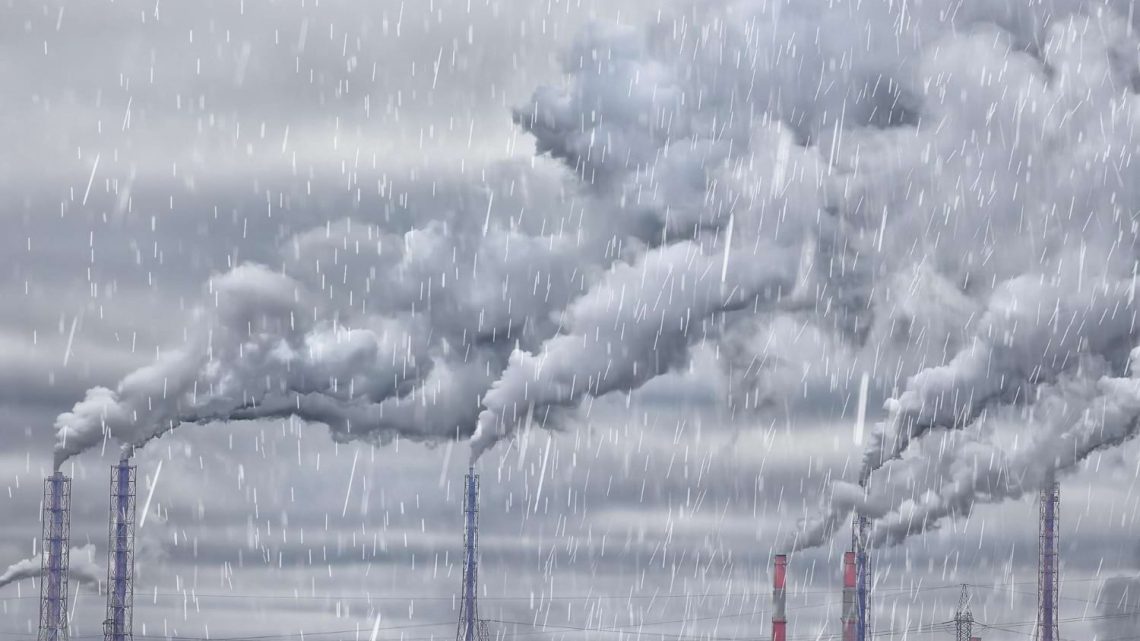Acid Rain: Understanding its Causes, Effects, and Impacts
October 20, 2024Acid rain is a term used to describe a type of precipitation that has elevated levels of hydrogen ions, making it unusually acidic. This phenomenon primarily occurs when rain, snow, fog, or even dust contains higher-than-normal amounts of acidic components such as sulfuric and nitric acids.
While rainwater is naturally slightly acidic due to the presence of carbon dioxide in the atmosphere, which forms weak carbonic acid, acid rain is far more corrosive. The pH level of normal rain is around 5.6, whereas acid rain can have a pH as low as 4.3 or lower, making it significantly more harmful to both living organisms and man-made structures.
Acid rain is not limited to any specific geographical area. It can affect both highly industrialized regions and remote natural environments, as the pollutants that cause it can travel vast distances in the atmosphere. The term “acid rain” might sound specific to rain itself, but it can include all forms of acidic precipitation such as sleet, snow, and fog. Understanding what acid rain is requires looking at both its origins and its wider implications for ecosystems, human health, and the built environment.

How Acid Rain is Created
The process that creates acid rain begins with the release of sulfur dioxide (SO2) and nitrogen oxides (NOx) into the atmosphere. These pollutants are primarily emitted by the burning of fossil fuels, especially coal and oil, in power plants, vehicles, and industrial processes. Once these chemicals are released into the air, they undergo a series of complex chemical reactions. When sulfur dioxide and nitrogen oxides combine with water vapor, oxygen, and other chemicals in the atmosphere, they form sulfuric and nitric acids.
These acids then mix with precipitation, falling back to the earth in the form of acid rain. Natural sources such as volcanic eruptions and wildfires can also contribute to acid rain, but human activity is by far the largest contributor. The widespread use of fossil fuels over the last two centuries, especially in industrialized nations, has greatly accelerated the production of the pollutants responsible for acid rain.
Effects of Acid Rain on the Environment
The effects of acid rain on the environment are profound and widespread. One of the most significant impacts is on aquatic ecosystems. When acid rain falls into rivers, lakes, and streams, it lowers the pH of the water, making it more acidic. Many aquatic organisms, such as fish, amphibians, and invertebrates, are sensitive to changes in pH levels. As the water becomes more acidic, these species can suffer from reproductive problems, reduced growth, and in extreme cases, die-offs. Acid rain also leaches toxic substances like aluminum from the soil into the water, further harming aquatic life.
Forests are another major victim of acid rain. When it falls on forested areas, acid rain can strip the soil of essential nutrients such as calcium and magnesium, which trees and plants need to grow. Over time, this nutrient depletion weakens trees, making them more susceptible to disease, extreme weather conditions, and pests. Acid rain can also damage the leaves and bark of trees, further impairing their ability to photosynthesize and grow.
The effects of acid rain are not just limited to living organisms. Buildings, monuments, and infrastructure made from limestone, marble, and other materials can be eroded by the acids in the rain. Historic landmarks and statues are particularly vulnerable, as acid rain accelerates the weathering process, causing irreversible damage to cultural heritage sites.

Global Efforts to Combat Acid Rain
Recognizing the dangers posed by acid rain, governments around the world have implemented various measures to reduce emissions of sulfur dioxide and nitrogen oxides. One of the most successful initiatives has been the introduction of emissions trading schemes, such as the U.S. Clean Air Act’s Acid Rain Program, which allows industries to buy and sell emissions credits. This market-based approach has significantly reduced sulfur dioxide emissions since the 1990s.
In addition to regulatory efforts, technological advancements have played a key role in combating acid rain. Many power plants have installed scrubbers, devices that remove sulfur dioxide from their emissions before they are released into the atmosphere. Similarly, catalytic converters on vehicles help reduce nitrogen oxide emissions. Switching to cleaner energy sources, such as natural gas, wind, and solar power, also helps reduce the pollutants that cause acid rain.
Author Profile
Latest entries
 LogisticsJune 28, 2025SkyCell: Revolutionising Pharmaceutical Logistics with the 1500X Hybrid Container
LogisticsJune 28, 2025SkyCell: Revolutionising Pharmaceutical Logistics with the 1500X Hybrid Container TechnologyJune 22, 2025The Strategic Importance of Technical Documentation
TechnologyJune 22, 2025The Strategic Importance of Technical Documentation Home Improvement & DecorApril 29, 2025Guida alla riparazione delle tapparelle: un’arte che ogni casa dovrebbe conoscere
Home Improvement & DecorApril 29, 2025Guida alla riparazione delle tapparelle: un’arte che ogni casa dovrebbe conoscere HomeApril 29, 2025The Advantages of High-Quality Window Profiles
HomeApril 29, 2025The Advantages of High-Quality Window Profiles



